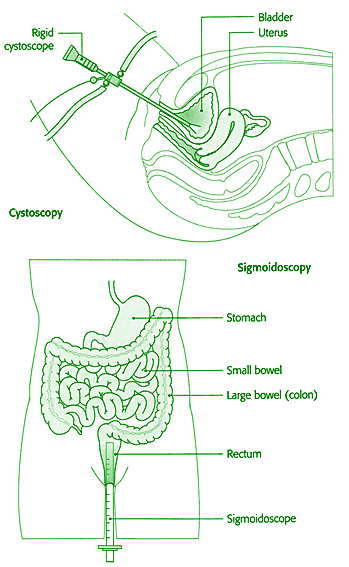|
Cystoscopy, biopsy and sigmoidoscopy
• Treatment of cervical cancer depends on the stage that the disease
has reached. This is a measure of the size of the tumour and how far
it has spread. Your doctor may carry out several different investigations
(including a thorough pelvic examination), often under general anaesthetic.
• A piece of tissue, called a biopsy, may be removed in the colposcopy
clinic or while you are anaesthetized. This is then sent to the laboratory
for analysis.
• Your bladder may be examined in a procedure called cystoscopy.
A narrow telescope, called a cystoscope, is inserted into your urethra,
to examine the bladder for signs that it has been affected by the cancer.
The urethra is the tube through which urine passes out of the body.
• The lower part of the bowel may be examined in a procedure caUed
sigmoidoscopy. A metal or plastic tube, called a sigmoidoscope, is inserted
into the back passage.
• After these investigations, you may feel some discomfort when
you go to the toilet, but this should pass within a day or so.
• Many patients with cervical cancer do not need these investigations.
|
 |




